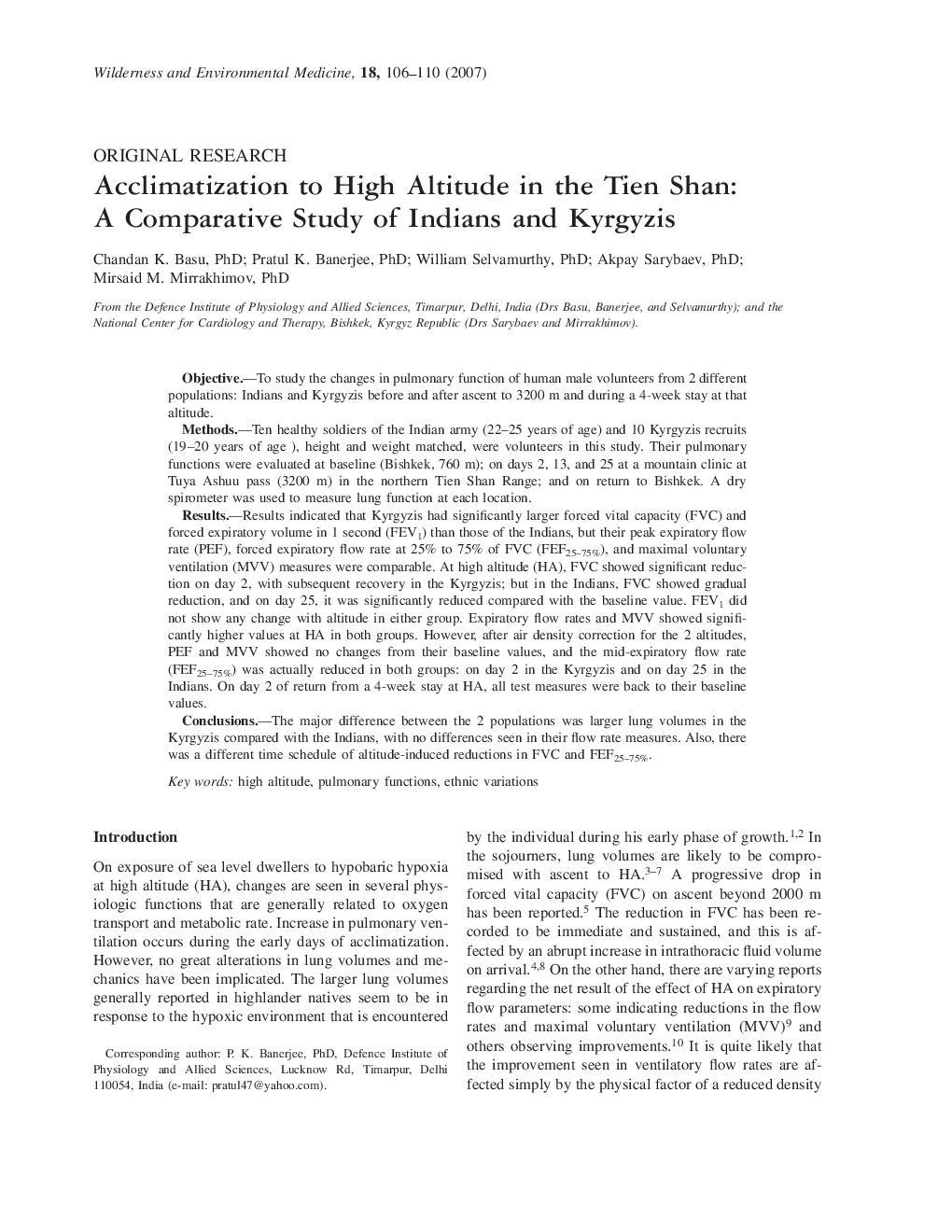| کد مقاله | کد نشریه | سال انتشار | مقاله انگلیسی | نسخه تمام متن |
|---|---|---|---|---|
| 2615490 | 1135093 | 2007 | 5 صفحه PDF | دانلود رایگان |

ObjectiveTo study the changes in pulmonary function of human male volunteers from 2 different populations: Indians and Kyrgyzis before and after ascent to 3200 m and during a 4-week stay at that altitude.MethodsTen healthy soldiers of the Indian army (22–25 years of age) and 10 Kyrgyzis recruits (19–20 years of age), height and weight matched, were volunteers in this study. Their pulmonary functions were evaluated at baseline (Bishkek, 760 m); on days 2, 13, and 25 at a mountain clinic at Tuya Ashuu pass (3200 m) in the northern Tien Shan Range; and on return to Bishkek. A dry spirometer was used to measure lung function at each location.ResultsResults indicated that Kyrgyzis had significantly larger forced vital capacity (FVC) and forced expiratory volume in 1 second (FEV1) than those of the Indians, but their peak expiratory flow rate (PEF), forced expiratory flow rate at 25% to 75% of FVC (FEF25–75%), and maximal voluntary ventilation (MVV) measures were comparable. At high altitude (HA), FVC showed significant reduction on day 2, with subsequent recovery in the Kyrgyzis; but in the Indians, FVC showed gradual reduction, and on day 25, it was significantly reduced compared with the baseline value. FEV1 did not show any change with altitude in either group. Expiratory flow rates and MVV showed significantly higher values at HA in both groups. However, after air density correction for the 2 altitudes, PEF and MVV showed no changes from their baseline values, and the mid-expiratory flow rate (FEF25–75%) was actually reduced in both groups: on day 2 in the Kyrgyzis and on day 25 in the Indians. On day 2 of return from a 4-week stay at HA, all test measures were back to their baseline values.ConclusionsThe major difference between the 2 populations was larger lung volumes in the Kyrgyzis compared with the Indians, with no differences seen in their flow rate measures. Also, there was a different time schedule of altitude-induced reductions in FVC and FEF25–75%.
Journal: Wilderness & Environmental Medicine - Volume 18, Issue 2, June 2007, Pages 106–110